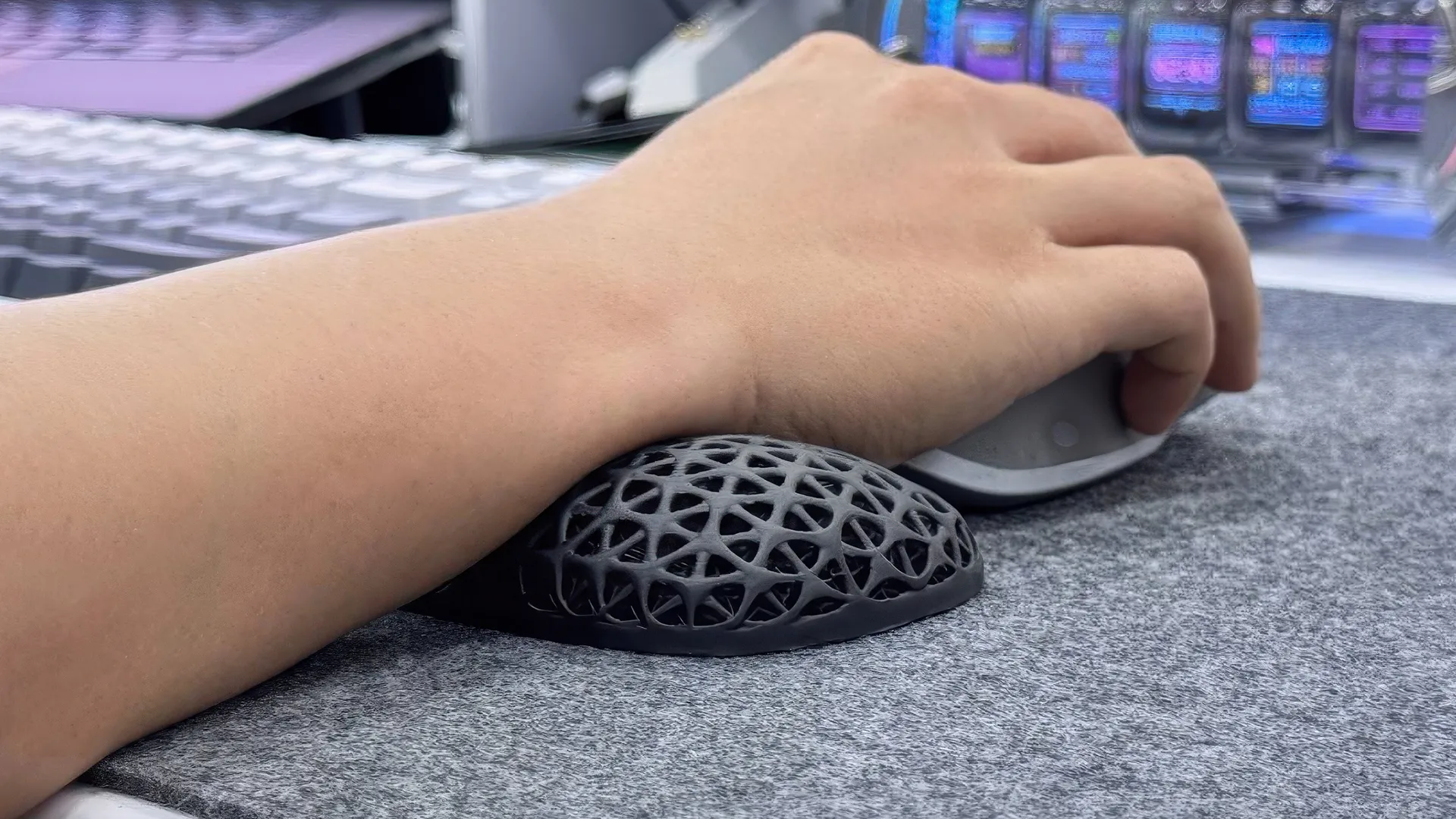
Stay Productive with these Hand and Wrist Exercises
Table of Contents
Carpal tunnel syndrome can sneak up on anyone who spends long hours typing, clicking, or working with their hands. If you’ve ever felt tingling, numbness, or pain in your fingers or wrists—especially at night—you might already be familiar with the early signs. The good news? You don’t have to wait for it to get worse. Regular wrist exercises, combined with proper typing posture and ergonomic tools, can make a big difference in keeping your hands healthy and pain-free.
What Causes Carpal Tunnel Syndrome?
Carpal tunnel syndrome happens when the median nerve—which runs from your forearm into your palm—gets compressed as it passes through the narrow tunnel of bones and ligaments in your wrist. This pressure can be caused by repetitive hand movements, poor posture, or even swelling from inflammation.
Common risk factors include:
- Prolonged typing or mouse use
- Poor wrist or desk ergonomics
- Repetitive hand motions (like using tools or playing instruments)
- Certain medical conditions (such as diabetes or arthritis)
To lower your risk, it helps to improve your carpal tunnel desk setup and introduce supportive accessories and habits into your routine.
If left untreated, the discomfort can progress into weakness, loss of grip strength, or even long-term nerve damage.
1. Why Wrist Exercises Help
When done consistently, wrist exercises help by:
- Improving flexibility in the muscles and tendons
- Increasing blood flow to the wrist and hand
- Reducing pressure on the median nerve
- Promoting better posture and joint alignment
These benefits are especially noticeable when exercises are paired with regular breaks, proper gear, and a wrist-neutral work setup. Many people also benefit from using wrist pads for keyboard support during long hours of typing.
2. When to Do Wrist Exercises
The key to effectiveness is consistency. Try to:
- Stretch every 1–2 hours during computer work or repetitive tasks
- Do a short routine before and after long typing sessions
- Make wrist care part of your daily wellness routine, like brushing your teeth
If you’re already feeling signs like tingling or wrist fatigue, don’t ignore them—pause, stretch, or reposition yourself. Tools like a keyboard tray or a negative tilt setup can also help maintain a neutral angle for your hands.
/https://storage.googleapis.com/s3-autonomous-upgrade-3/production/ecm/241210/grey_1.jpg)
Best Wrist Exercises to Prevent Carpal Tunnel
1. Thumb Touches
These exercises help to align coordination between forefingers and the thumb. Also, they improve blood flow to the fingers.
Begin by holding your hands outwards with your palms facing upwards. With your left hand, slowly bring your thumb to touch the tip of every finger. Repeat this with the right hand and then return to the starting position. Repeat at least 10 times with both hands.
2. Shake It Out
After being in a stationary position for a while, shake out your wrists and hands. This is a great way to improve blood circulation and relieve stiff muscles and joints.
Start with your hands out in front of you, with your palms facing the floor. Slowly shake your hands by letting your wrists go limp. Do this for 15- 30 seconds and repeat at least five times.
3. Wrist Circles
Sit in a chair or stand with your legs slightly apart. Then raise your arms to about chest high, while your elbows are bent, such that your hands are out in front of you. You can leave your hands open if you want or make a fist. Move your hands in small circles and transition slowly to bigger circles, while keeping your arms still and only moving at the wrist. Do this for about 2 minutes and then repeat in the reverse direction.
4. Hand Open-and-Close
With your elbows touching your sides, stretch your forearms in front. Make a fist and hold this position for 30 seconds. Then open your hand and spread your fingers wide. Hold this position for 30 seconds. Repeat this stretch five times.
5. Simple Wrist Stretch
The simple wrist stretch is a fantastic way to relieve stiff joints in the wrist, especially after extended periods of typing and writing.
Hold your right hand out in front, with your palm facing upwards. Grip all four fingers with your left hand. Then, pull your fingers gently down towards the floor. Hold this position for 20 seconds and then release your right hand and go back to the starting position. Repeat this stretch with your left hand, holding for 20 seconds. Repeat the exercise on both hands at least five times.
6. Grip Strengthening Stretches
Strengthening your grip is an excellent way to improve your entire hand and forearm strength. Also, strengthening your grip strengthens your wrist muscles, protecting it from RSI.
Start in a seated position, with your right arm rested on your desk. Then, hold a hand gripper or rubber ball. Squeeze and release the gripper with all four fingers and your thumb in rapid repetition. Repeat this stretch at least 20 times until you feel a stretch at the bottom of your forearm. Then switch to the other hand.
7. Wrist Flexion and Extension Stretches
The wrist flexion and extension stretch improves blood flow to the entire wrist, and it wards off conditions, such as carpal tunnel syndrome and RSI.
Sit down with your feet flat on the ground and then place one arm at the edge of your desk, with the palm facing downwards and the entire hand dangling off the edge.
Gently stretch your hand at the wrist upwards until you feel a stretch. Hold this position for 20 seconds, then release back to the starting position. Next, slowly flex your hands downwards towards the floor until you feel a stretch. Repeat this stretch at least five times in both directions. Then switch hands and repeat with the other hand.
8. Praying Position Stretches
Start by standing up and placing your palms together in a praying position. Let your elbows touch each other. Your hands should be in front of your face and make sure your arms are touching each other from the elbows to the fingertips.
Then hold your palms together and gently spread your elbows apart. Next, lower your hands to your waist and pause when your hands are in front of your stomach or you feel a sufficient stretch.
Hold for 30 seconds and then repeat. Then, raise one arm in front of you at shoulder height. Keep your palm facing down and then loosen your wrist so that your fingers dangle downwards. With your free hand, lightly wrap your fingers and pull them closer to your body. Hold this stretch for 30 seconds.
Ergonomic Tips for Wrist Health
Exercises are powerful, but they work best when combined with smart desk habits. Here’s how to create a wrist-friendly workspace:
- Invest in Ergonomic Tools
Start with an ergonomic keyboard and mouse to maintain hand alignment. Pair it with a monitor arm or dual monitor stand to ensure your screens are at eye level, minimizing shoulder and wrist strain.
- Mind Your Posture
Keep your shoulders relaxed, elbows close to your body, and wrists level—not bent upward or downward—while working. Use this guide to find the ideal ergonomic position for your elbows at a desk.
- Take Micro-Breaks
Every 30–60 minutes, pause to stretch your hands, shake out your wrists, and change position. Adding movement can reduce stiffness and prevent long-term injury.
- Strengthen Your Hands and Forearms
Simple resistance exercises like squeezing therapy putty or a stress ball can help. For those dealing with pain in the thumb area, consider these ergonomic solutions for thumb pain.
If you're using a standing desk, optimizing your setup is just as important. Get an ideal standing desk setup to fine-tune your workstation, and don’t miss these essential standing desk accessories for even more comfort.

FAQs
What are the best wrist exercises to prevent carpal tunnel?
Simple stretches like wrist flexor and extensor stretches, wrist circles, and finger stretches can help. Regularly doing nerve gliding exercises can also keep the median nerve moving freely.
How often should I do wrist exercises to prevent carpal tunnel?
Aim to stretch and move your wrists every 1–2 hours during long periods of typing or repetitive hand tasks. Daily routines are ideal for long-term prevention.
Can wrist exercises really prevent carpal tunnel syndrome?
Yes, consistent wrist exercises can reduce stiffness, improve circulation, and decrease pressure on the median nerve, lowering your risk of carpal tunnel over time.
What are the signs that I need to start doing wrist exercises?
Early symptoms like tingling, numbness, or a burning sensation in your fingers—especially at night—are warning signs. Regular exercises may help reduce discomfort and delay progression.
Should I stop working if I feel wrist pain?
If you feel pain, take a break immediately. Overworking sore wrists can make things worse. Use that time to do gentle stretches or consult a healthcare provider if the pain persists.
Are there tools or accessories that can support my wrist exercises?
Yes, ergonomic keyboards, wrist rests, and forearm supports can complement your exercise routine by minimizing strain during work.
Do I still need wrist exercises if I use an ergonomic mouse and keyboard?
Yes. While ergonomic tools reduce strain, exercises keep your muscles and tendons flexible and strong. They work best together.
Can wrist exercises help if I already have carpal tunnel syndrome?
They may help relieve mild symptoms but shouldn’t replace medical treatment. Always consult your doctor or physical therapist before starting any exercise if you’ve been diagnosed.

Final Thoughts
Carpal tunnel syndrome doesn’t have to be inevitable. With just a few minutes of daily wrist care and a mindful ergonomic workspace, you can protect your hands for the long haul. Think of wrist exercises not as a chore, but as a small investment in your comfort, productivity, and health—especially if your hands are your main tools at work.
It also helps to pair those exercises with the right equipment. Learn how to use a wrist rest effectively, and make sure your setup follows the proper keyboard and mouse position to reduce unnecessary strain.
For those using or considering a standing desk, maximize its benefits by following a few standing desk exercises and reviewing these tips for using your standing desk like a pro. Curious if it’s worth it? Here are the top health benefits of a standing desk to help you decide.
Lastly, if you work on a laptop, consider using a laptop stand to raise your screen to eye level—this simple upgrade can reduce wrist and neck strain dramatically.
Your hands do so much—give them the support they deserve.
Spread the word
.svg)







